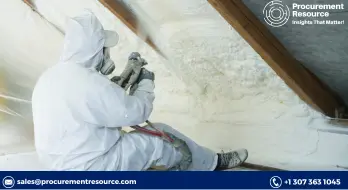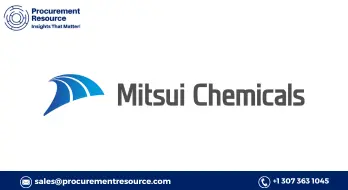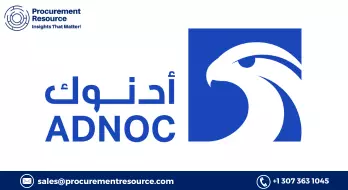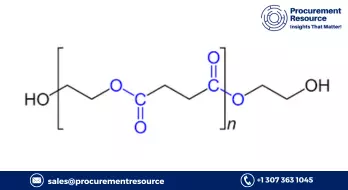Product
Polyurethane Price Trend and Forecast
Polyurethane Price Trend and Forecast
Polyurethane Regional Price Overview
Get the latest insights on price movement and trend analysis of Polyurethane in different regions across the world (Asia, Europe, North America, Latin America, and the Middle East & Africa).
Polyurethane Price Trend for the First Half of 2024
Asia
Since the advent of the year 2024, the polyurethane market of Asian countries opted for a bearish stance as its prices fluctuated on the lower end of the pricing spectrum. During the first quarter, despite the surge in prices of major feedstock chemicals, the overall outlook of the market remained frail. The market participants assert that these sentiments of the market were primarily influenced by the weak support of the downstream industries.
Polyurethane Price Chart

Please Login or Subscribe to Access the Polyurethane Price Chart Data
The low procurement rates, particularly in China, during the first quarter were a consequence of the holiday season and limited industrial activities. Additionally, the soaring logistical challenges and transportation issues further contributed to the southward movement of the polyurethane market. The second quarter also continued on a similar front as the excessive supply amid weak support from the downstream industries widened the supply-demand gap of the market, eventually resulting in the oscillation of polyurethane prices on the lower end.
Europe
The performance of polyurethane prices during the first quarter of 2024 in the European countries was better than the Asian’s as the prices of the commodity fluctuated in a narrow range. Unlike the Asian countries, the major roadblock for the polyurethane market in the European countries was the falling cost of production, which in turn was influenced by the weak cost support of feedstock commodities. However, after an initial phase of stagnancy, the demand, particularly from the downstream construction sector, improved gradually and helped in the slight uptick of market momentum. Additionally, in the second quarter, the pace of this upsurge accelerated with the limited influx of commodities from overseas players and accelerating demand from the downstream industries. Further, the bullish sentiments were fueled by the accelerating cost of feedstock commodities as well.
North America
In North America, the prices of polyurethane resonated with the European countries during the first quarter and with Asia during the second quarter. The fluctuating market sentiments in the first quarter were a consequence of meek demand from the downstream automotive industries and the initiation of the festival season in China. The congestion of Panama Canal exports further hampered the profit margins of manufacturers and traders which continued in the second quarter of the year as well, resulting in the oscillation of polyurethane prices on the lower end of the pricing spectrum.
Analyst Insight
According to Procurement Resource, the price of Polyurethane is expected to follow a bearish tone in the forthcoming quarters as the current market statistics presented by the downstream and feedstock industries do not look in favor of the polyurethane market.
Polyurethane Price Trend for the Second Half of 2023
Asia
Polyurethane behaved in a mixed manner in the Asian markets during the said period of H2’23. Even though there were some notable upticks, especially during the latter months of the fourth quarter, the prices mostly wavered at the lower end of the curve.
Following the market trajectories of its feedstock materials, polyols, and diisocyanates, the polyurethane prices caught up as well. Since both upstream and downstream factors pushed the prices down, a very sluggish market performance was observed.
Europe
The European polyurethane market was a little stable in the third quarter as the downstream automotive industry performed optimally during this time. So, a higher demand pattern started pulling up the prices since the beginning of the quarter in July’23. However, the fourth quarter was largely depreciating as the heavily stacked inventories started exerting a high upstream pressure amidst lackluster demands. Overall, mixed market sentiments were observed.
North America
The North American polyurethane market was more influenced by the Asian polyurethane market during the given period. As the downstream manufacturing and electronics industries were struggling to find new customers, the demand trajectory was largely stagnant.
Along with this, the raw material costs also started dipping, which took away the upstream cost support. Suppliers had anticipated a better performance during the holiday season in the fourth quarter. However, disturbed global freight and adverse geopolitical situations riddled customer sentiments. Conclusively, a weak market performance was witnessed.
Analyst Insight
According to Procurement Resource, the Polyurethane price trends are expected to waver even more in the coming months; a dull demand projection is guiding this market pattern.
Polyurethane Price Trend for First Half of 2023
Asia
In the first quarter of 2023, the price trend of polyurethane remained stable as the slow demand from the automotive industries and the limited availability of products in the market countered each other. However, towards the end phase of the first quarter, the prices of crude oil began to rise, which limited the production rates and affected the inflow of polyurethane in the market, thus resulting in a rise in its price trend.
This inclining trajectory was followed throughout the second quarter as volatility in crude oil prices, high purchasing potential of buyers, and steady movements of supply chains aided the inclining journey of the polyurethane price trend.
Europe
A fluctuating trend in the prices of polyurethane was observed in the first quarter of 2023, while in the second quarter, the price trend declined significantly. The first quarter struggled with the slow rates of production, falling downstream demand, and strict sanctions on the Russian outputs.
This sluggish demand from downstream industries continued to cause problems for the price trend of polyurethane in the second quarter also. In addition to this, rates of exports, high availability of stocks, and reduction in number of overseas intakes also hampered the polyurethane price trend trajectory.
North America
Weak rates of procurement from automotive industries, as well as from domestic and international buyers, kept the price trend of polyurethane in the negative zone in the first quarter of 2023. The rates of interest rose exponentially, and further, due to poor spending of consumers, the price trend of polyurethane declined.
In the second quarter, the market of North America gained some momentum with improving economic conditions, but this was not sufficient to keep the prices of polyurethane afloat. Hence, as a result of weak demand, rising upstream costs, and a decline in the cost of feedstocks, the price trend of polyurethane moved southwards.
Analyst Insight
According to Procurement Resource, the price trend of Polyurethane is expected to decline. Feeble demand from the downstream sectors and high uncertainties in the global economic conditions are expected to weaken the polyurethane market.
Polyurethane Price Trend for the Second Half of 2022
Asia Pacific
The Asian market showcased a gradual decline in the price of Polyurethane. The decline is majorly attributed to the declining prices of raw materials like isocyanates and polyol in the regional market. The downstream industries also showcased a decline in the need for Polyurethane that severely impacted the market. The fourth quarter also mirrored the previous quarter as the industries continued to show a decline in demand with a decline in crude oil prices, disruptions in the supply chains due to COVID restrictions and the ongoing recession in the international market.
Europe
A positive price trend followed in the European region for the third quarter. The major driver behind the rise in prices was the steep rise in petrochemical supplies and the rise in energy and fuel costs that led to a surge in production costs. The product supplies were interrupted due to the shortage at the ports in the third quarter. The fourth quarter remained on the bearish side as the automotive sector saw a decline in demand from the market. The high energy production rates further negatively impacted the market and thus the prices for the commodity saw a decline in the fourth quarter.
North America
The North American segment showcased an upward growth in the price changes for Polyurethane. The positive response from the market is associated with the rise in demand from the domestic region along with the rise in feedstock prices. The fourth quarter, however, showcased a dip in the prices due to lower demand from the automotive sector and a rise in uncertainties in crude oil prices along with fluctuating energy production rates. The decline was also fueled by the rise in inflation and lower demand from the construction and household sectors, which are the traditional employers of the market.
Analyst Insight
The prices of Polyurethane are likely to fall during the coming months given the demand destruction in the end-user industries amidst the increasing cost of production and high inflation rates.
Polyurethane Price Trend For the First Half of 2022
Asia
In the first quarter of 2022, the demand for polymer products in Asian countries like China and India sharply increased due to higher discretionary consumption. At the beginning of January, the price of PU Resin was 4435 USD/MT FOB Shanghai in China, but by mid-February, it decreased in the Asian market.
During the second quarter of 2022, the pricing trend in the Asian region was fluctuating as feedstock prices constantly changed as a result of market instability in the petrochemical and crude oil sectors. Polyurethane prices in China and India increased by 4 to 6% on a quarterly basis as a result of the building and furniture industries' continued high demand.
Europe
With a spike at the start of the quarter and stable pricing for the remainder of Q1 2022, polyurethane prices were stable on the European market. The industry experienced margin difficulties as a result of rising raw material costs, which persisted throughout Q1.
In the European Region, the price trend for polyurethane (PU) resin remained stable, and product prices increased in the second quarter of 2022. Due to a sudden increase in petrochemical prices brought on by a lack of crude oil supply in the area, feedstock prices for TDI, MDI, and Polyol spiked at the beginning of the quarter. During the second quarter, the regional market's product offtakes remained subdued.
North America
Due to a rise in demand from downstream paints, coatings, sealants, plastics, etc., polyurethane resin price trend in North America were projected to be constant in the first quarter of 2022. The market sentiment of polyurethane resin remained negative throughout the second quarter, and North American product prices dropped. During the second quarter, the prices of the feedstocks TDI and propylene oxide varied due to unstable upstream petrochemical pricing.
The cost of producing the product was negatively impacted by the declining prices of Polyol and MDI at the same time. The product offtakes in the regional market during the period remained average as a result of the moderate demand for PU resin that persisted for furniture and sealants from the home and construction sectors.
Procurement Resource provides latest prices of Polyurethane. Each price database is tied to a user-friendly graphing tool dating back to 2014, which provides a range of functionalities: configuration of price series over user defined time period; comparison of product movements across countries; customisation of price currencies and unit; extraction of price data as excel files to be used offline.
About Polyurethane
Polyurethane (PUR and PU) refers to a polymer made up of organic units, which are further connected by carbamate (urethane) links. These polymers are conventionally formed by reacting a di- or triisocyanate with a polyol. Since polyurethanes are composed of 2 types of monomers, which polymerise one after the other, they are grouped as alternating copolymers. They are used in almost all industries as they possess a certain hardness and can replace rubber or even metal.
Polyurethane Product Details
| Report Features | Details |
| Product Name | Polyurethane |
| Industrial Uses | Foam seating and foam insulation panels, Wheels and tyres, Electronic applications, Electrical potting compounds, Adhesives, Surface coating and surface sealants, Synthetic fibres |
| Chemical Formula | (R1 NH COO R2)n |
| Synonyms | Carbamate Polymer |
| Supplier Database | BASF SE, The Dow Chemical Company, Umicore N.V, LANXESS AG, Mitsui Chemicals & SKC Polyurethanes Co., Ltd. |
| Region/Countries Covered | Asia Pacific: China, India, Indonesia, Pakistan, Bangladesh, Japan, Philippines, Vietnam, Iran, Thailand, South Korea, Iraq, Saudi Arabia, Malaysia, Nepal, Taiwan, Sri Lanka, UAE, Israel, Hongkong, Singapore, Oman, Kuwait, Qatar, Australia, and New Zealand Europe: Germany, France, United Kingdom, Italy, Spain, Russia, Turkey, Netherlands, Poland, Sweden, Belgium, Austria, Ireland Switzerland, Norway, Denmark, Romania, Finland, Czech Republic, Portugal and Greece North America: United States and Canada Latin America: Brazil, Mexico, Argentina, Columbia, Chile, Ecuador, and Peru Africa: South Africa, Nigeria, Egypt, Algeria, Morocco |
| Currency | US$ (Data can also be provided in local currency) |
| Supplier Database Availability | Yes |
| Customization Scope | The report can be customized as per the requirements of the customer |
| Post-Sale Analyst Support | 360-degree analyst support after report delivery |
Note: Our supplier search experts can assist your procurement teams in compiling and validating a list of suppliers indicating they have products, services, and capabilities that meet your company's needs.
Polyurethane Production Process
- Production of Polyurethane via Polymerisation
Synthetic polymers, like polyurethane, are often prepared by reacting monomers in a reaction vessel. In order to produce polyurethane, polyol, namely poly(1,4-butanediol adipate) is reacted with a diisocyanate like methylene diphenyl diisocyanate to polymerise in a twin screw extruder, which results in the formation of Polyurethane.
Methodology
The displayed pricing data is derived through weighted average purchase price, including contract and spot transactions at the specified locations unless otherwise stated. The information provided comes from the compilation and processing of commercial data officially reported for each nation (i.e. government agencies, external trade bodies, and industry publications).
Assistance from Experts
Procurement Resource is a one-stop solution for businesses aiming at the best industry insights and market evaluation in the arena of procurement. Our team of market leaders covers all the facets of procurement strategies with its holistic industry reports, extensive production cost and pre-feasibility insights, and price trends dynamics impacting the cost trajectories of the plethora of products encompassing various industries. With the best analysis of the market trends and comprehensive consulting in light of the best strategic footstep, Procurement Resource got all that it takes.
Client's Satisfaction
Procurement Resource has made a mark for itself in terms of its rigorous assistance to its clientele. Our experienced panel of experts leave no stone unturned in ensuring the expertise at every step of our clients' strategic procurement journey. Our prompt assistance, prudential analysis, and pragmatic tactics considering the best procurement move for industries are all that sets us apart. We at Procurement Resource value our clients, which our clients vouch for.
Assured Quality
Expertise, judiciousness, and expedience are the crucial aspects of our modus operandi at Procurement Resource. Quality is non-negotiable, and we don't compromise on that. Our best-in-class solutions, elaborative consulting substantiated by exhaustive evaluation, and fool-proof reports have led us to come this far, making us the ‘numero uno' in the domain of procurement. Be it exclusive qualitative research or assiduous quantitative research methodologies, our high quality of work is what our clients swear by.
Related News
Table Of Contents
Our Clients

Get in Touch With Us

UNITED STATES
Phone:+1 307 363 1045

INDIA
Phone: +91 8850629517

UNITED KINGDOM
Phone: +44 7537 171117
Email: sales@procurementresource.com





